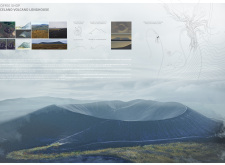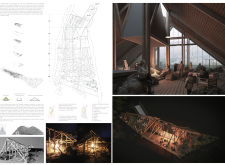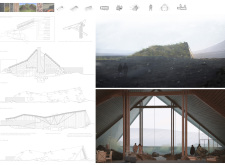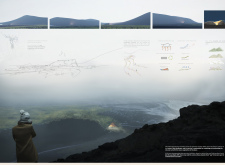5 key facts about this project
At its core, this architectural project represents a thoughtful integration of form and function, tailored to meet the needs of its users while respecting the surrounding environment. The building is envisioned as a space that encourages social interaction, creativity, and community engagement. With an emphasis on openness and transparency, the design invites natural light to permeate its interior, creating a welcoming atmosphere that fosters collaboration and productivity.
A notable feature of the project is its commitment to sustainability and the use of environmentally friendly materials. The design utilizes a range of materials that reflect both durability and aesthetic value. Key materials include reinforced concrete, which provides structural integrity, and glass elements that enhance the building’s connection to the outside world by offering clear views of the surroundings. The thoughtful incorporation of wood, particularly in the form of cladding and interior finishes, adds warmth and texture, creating a harmonious balance with the more industrial materials.
The layout of the project is intentionally designed to maximize functionality while also promoting a natural flow between different areas. Open spaces are complemented by designated zones for specific activities, ensuring that the transition from one area to another is seamless. The incorporation of an expansive atrium serves as a central node, facilitating movement throughout the building while also acting as a communal gathering space. This design choice underlines the project's aim to foster a sense of community and inclusivity.
Unique design approaches are evident in the building’s façade, which combines a dynamic interplay of solid and transparent elements. This not only contributes to the overall aesthetic but also promotes energy efficiency by allowing for natural ventilation. The strategic placement of operable windows encourages passive airflow, reducing dependence on mechanical heating and cooling systems, and further emphasizing sustainable design practices.
Landscaping around the project further enhances its integration into the environment. The careful selection of native plants not only adds to the visual appeal but also supports local biodiversity. Outdoor spaces are designed to be utilized for various activities, providing opportunities for recreation, relaxation, and reflection—a critical aspect in today’s architectural discourse where the relationship between indoor and outdoor environments is increasingly prioritized.
The architectural plans and sections reveal meticulous attention to detail, with an emphasis on user experience and accessibility. Elevations highlight the building's interaction with its surroundings, showcasing how varying heights and masses create visual interest while adhering to zoning regulations. This careful consideration of context and scale underscores the project's commitment to thoughtful urban design.
In essence, this architectural project stands as a testament to contemporary design principles, merging functionality with a strong aesthetic vision. The focus on sustainable practices, community connectivity, and thoughtful materiality positions it as a relevant example of modern architecture that resonates with current societal needs. For those interested in delving deeper into the specifics of the design, exploring the architectural plans, sections, and further architectural ideas can provide valuable insights into the project’s innovative approach and its broader implications within the field of architecture. We invite you to engage with the presentation materials to fully appreciate the complexity and intention behind this noteworthy architectural endeavor.


























